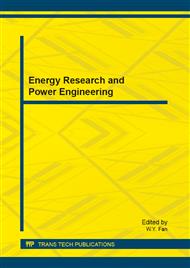p.1053
p.1058
p.1062
p.1066
p.1071
p.1076
p.1080
p.1085
p.1089
Research and Realization of the Control Performance in the Electro-Magnetic Gears Transmission System
Abstract:
This paper has set up the dynamic model of the electro-magnetic gear and deduced the transfer function which the input is electric current and the output is torque, and designed the neural network PID controller in the electro-magnetic gears control system according to the principle of the electro-magnetic gear transmission system, which has been simulated dynamically under MATLAB environment. The result shows that design method can adjust changes in real-time basis according to the input electric current, which improves the dynamic features greatly and achieves steady output of the system.
Info:
Periodical:
Pages:
1071-1075
Citation:
Online since:
July 2013
Authors:
Price:
Сopyright:
© 2013 Trans Tech Publications Ltd. All Rights Reserved
Share:
Citation:


